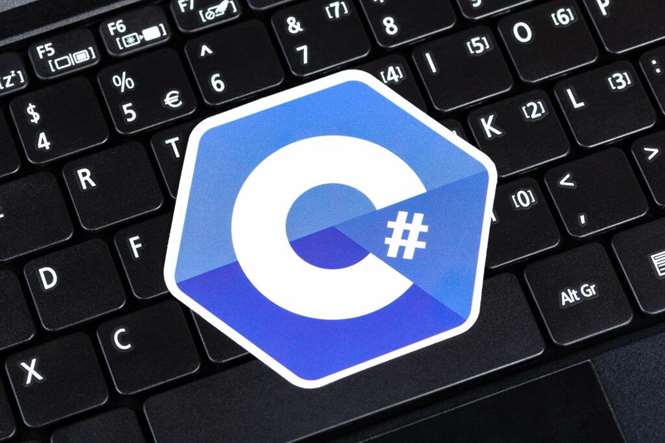Pure Language Processing For E-commerce
For example, AI can analyze customer knowledge to establish rising food trends or dietary preferences, enabling companies to adapt their choices quickly and efficiently. As food safety rules and security management turn out to be stricter, companies should maintain compliance. Artificial Intelligence can be utilized to assist keep transparency and accountability throughout the food supply chain. For example, Symphony RetailAI helps food service providers to minimize back wastage and enhance efficiency by deploying AI.

With a devoted group of domain experts, we’re capable of addressing the unique challenges and alternatives within the meals trade. Ensuring food safety compliance and sustaining high hygiene standards are crucial for any meals business aiming to uphold their status for excellence. Let’s delve into how AI systems can revolutionize these elements in the meals trade. However, with the transformative capabilities of synthetic intelligence, organizations can tackle these urgent issues and drive sustainable practices across the food sector. Data analyzed by AI helps meals firms launch corrective measures to take away issues in the food production earlier than they cause hazards later.
Post-harvest Handling And Meals Processing
Food and Beverage Artificial Intelligence Consulting consulting is a specialized area that mixes the experience of food industry knowledge with the disruptive potential of AI expertise. This distinctive mix presents companies a pathway to combine AI solutions into their food-related operations, making certain they keep forward in a extremely aggressive and evolving market. Natural language processing is a department of synthetic intelligence that enables computers to know, interpret, and manipulate human language in the same methods humans can by way of textual content or spoken words. Most renowned AI software firms imagine that AI-powered solutions drive far-reaching results on bettering supply chains and guarantee cleanliness, when it comes to saving water, time, and vitality. The revenue loss it causes to food companies stands in billions of dollars every year.
This approach offers deeper, extra nuanced insights, similar to predictive analytics and shopper conduct modeling, which are sometimes past the scope of conventional strategies. Finally, AI may help optimize meals production processes to reduce waste and increase effectivity. AI platforms can determine food based on its colour, form, and organic characteristics. This allows for a extra environment friendly and efficient sorting course of that can improve food quality and safety. McDonald’s, a meals business frontrunner, integrates AI and ML applied sciences to streamline its operational workflows and elevate the overall buyer experience. McDonald’s made headlines with its acquisition of Dynamic Yield, a leading customized marketing and determination logic know-how agency, to integrate AI-driven software into drive-thru menus.
Ethical Implications: Meals For Thought
AI expertise has the potential to improve meals manufacturing efficiency and accuracy, however it comes with excessive prices. The market for AI-assisted meals manufacturing is rising rapidly, but there are some restraints which would possibly be stopping it from becoming more widespread. The attractiveness of the AI food production industry is predicated on its capability to generate shopper curiosity and cut back human error. More and better details about every single meals item helps shoppers scale back food waste. Five cooperation partners are creating solutions for the gathering and analysis of complicated food-relevant knowledge.

Especially when this information is used for tangible forecasts by the use of artificial intelligence. These forecasts accomplish more than simply serving to the meals industry to optimize production. Finance and insurance teams operating in the world marketplace for raw supplies and meals also benefit from them. AI could reduce food waste by 2030 by introducing more regenerative leisure agricultural practices.
In order to meet this challenge, many companies are turning to artificial intelligence (AI) for help. In the following, we focus on some of the ways AI can be utilized by food manufacturers, corresponding https://www.globalcloudteam.com/9-natural-language-processing-examples-in-action/ to creating new products with less trial and error or creating recipes. Trend forecasting is the follow of predicting future tendencies so as to make informed selections about eating places or retail operations.
AI drives priceless contributions to food companies, together with top-notch brands and entrepreneurial visionaries. For instance, Nestlé and Nuritas use AI to identify proteins that allow production of healthy meals. Kraft Heinz is utilizing AI to optimize and enhance its relationships with stores, sales reps, and customers. Addressing bias in NLP fashions is a crucial recipe for fulfillment within the meals and beverage business.
How We Envisioned Ai And Nlp To Deliver Foresight To Product Planning For Meals And Beverage Industry?
Since it translates a user’s, and in the case of ecommerce, a customer’s intent, it allows companies to provide a better expertise through a text-based search bar, exponentially increasing RPV for your model. One of the key benefits of generative AI for pure language processing is that it allows machines to generate human-like responses to open-ended questions or prompts. For instance, chatbots powered by generative AI can hold more naturalistic and fascinating conversations with users, rather than merely providing pre-scripted responses. Generative AI includes using machine learning algorithms to create realistic and coherent outputs based mostly on uncooked data and training knowledge. Generative AI fashions use massive language fashions (LLMs) and NLP to generate unique outputs for users. Despite the spectacular advancements in NLP technology, there are still many challenges to beat.

Let’s explore the intricacies encountered by meals trade stakeholders as they embrace AI and ML technologies. Platforms powered by synthetic intelligence are revolutionizing cooking by offering customized recipe recommendations and real-time assistance to customers of all ability ranges. With a suite of solutions tailored to a number of challenges encountered all through the manufacturing cycle, AI extends its transformative influence from planning to distribution. For starters, lack of quality and standardized knowledge is amongst the primary challenges. That’s as a outcome of AI know-how relies on the quality of information supplied to it for accurate predictions of results. For instance, sensor-assisted optical sorting options can expedite the process of sorting recent produce.
To deal with this problem, we introduced an ML-powered answer for full automation of bill processing. This software, delivered through an API, predicts the master service code of an merchandise in an bill based mostly on its textual description. Moreover, this answer enables time savings and reduces human error, all while guaranteeing compliance with regulations. “Dynamic pricing algorithms empowered by artificial intelligence can modify menu prices in real-time based mostly on demand fluctuations, competitor pricing, and other market dynamics. This pricing strategy ensures that eating places can maximize income while maintaining competitive yet inexpensive meals costs, leading to elevated profitability”. “Guided by reinforcement learning algorithms, synthetic intelligence optimizes harvesting strategies in real-time, factoring in variables corresponding to crop density, ripeness, and subject conditions.
Faq On Synthetic Intelligence Within The Meals Trade
By incorporating real-time data, Ai Palette’s software program might help cut back the prices of growing new meals products. The meals business is dealing with ever-increasing shopper demands for personalization and quality. AI permits businesses to grasp and predict consumer conduct with larger accuracy, allowing them to tailor their services more effectively.
This requires a deep understanding of the nuances of human communication, together with grammar, syntax, context, and cultural references. By analyzing vast amounts of information, NLP algorithms can study to recognize these patterns and make accurate predictions about language use. AI and NLP are deeply interconnected, with NLP serving as a key part of many AI-powered purposes. At its core, AI is about creating machines that may perform duties that might usually require human-level intelligence. NLP helps to enable this by allowing computer systems to know and interact with human language, which is an important part of many AI applications. Large amounts of data is a mainstay of generative AI and typically a barrier to entry for smaller companies.

Collaborative efforts are needed to overcome these hurdles and foster an setting conducive to ML and AI within the food business innovation. Successful implementation of AI within the meals industry hinges on access to specialised abilities and experience in knowledge science, machine studying, and domain knowledge. However, the trade grapples with a notable scarcity of certified professionals possessing the requisite technical proficiencies and domain-specific insights. Bridging this abilities hole requires concerted efforts to domesticate expertise pipelines and foster interdisciplinary collaboration to bolster the industry’s capacity to successfully leverage AI and ML capabilities.
Improved Buyer Satisfaction
Natural Language Processing (NLP) is a department of synthetic intelligence that deals with the interplay between computer systems and human languages. A key facet of operations within the food industry is accounting for the shelf lives of merchandise. New technologies like AI and sensors can help us to make better decisions about what we purchase, eat, and cook with – even in relation to selecting dishes at eating places. However, the business can also be underneath immense stress to produce more meals with fewer assets.
With NLP, computers can decipher meaning from textual content or speech, recognize patterns in language, and even generate their very own human-like responses. At the retail degree, food loss due to spoilage may be curbed by using AI to track expiry dates and monitor the shelf-life of merchandise. AI can optimize stock management, which fits a good distance towards eliminating waste for the reason that shops will higher meet client demand, thereby reducing excess stock and in turn, meals waste. It is important to know what is on store shelves in real-time to plan if reductions must be done to maneuver goods nearing their sell-by date. AI in the food business facilitates accurate demand forecasting, stock and supply chain management. It additionally empowers meals producers to handle climate-related dangers and enhance sustainable agricultural practices.
- In the food business, achieving correct AI models hinges on acquiring high-quality and pertinent data.
- A historic analysis of this knowledge also can allow you to pinpoint seasonal tendencies in each your supply chain and shopper shopping for conduct and adapt your operations and offerings accordingly.
- Generative AI involves utilizing machine studying algorithms to create practical and coherent outputs based mostly on raw knowledge and coaching data.
- For instance, sensor-assisted optical sorting options can expedite the method of sorting recent produce.
- Powered by edge computing, AI additionally processes sensor information instantaneously, facilitating agile decision-making and elevating production effectivity to unprecedented levels”.
Additionally, AI and ML promise customized diet suggestions, good kitchen home equipment, and cooking assistance platforms for shoppers and restaurants, selling healthier existence. Machine vision know-how also performs an important role on this course of, enabling AI methods to detect food merchandise contamination and safety hazards with precision and accuracy. By repeatedly analyzing visual knowledge from cameras put in throughout the restaurant, these methods can establish potential dangers and alert food trade workers in real-time.
As a end result, you possibly can goal your advertising campaigns successfully to deliver the type of personalized messaging suggestions, and reductions that your clients count on. This enables your organization to refine and optimize your product portfolio by solely offering the meals and beverage merchandise your shoppers truly need and eliminating the merchandise with low gross sales and popularity. Big data can be used to considerably enhance the experience and satisfaction of your clients after they dine with or store along with your model.
Process Manufacturing ERP methods are designed to handle the complexities of manufacturing processes particular to industries like food and beverage. These methods integrate varied features corresponding to manufacturing, quality management, provide chain management, and compliance right into a single platform. By leveraging a Process Manufacturing ERP, firms can streamline operations, improve knowledge accuracy, and guarantee consistent product high quality. In the food business, synthetic intelligence also helped Coca-Cola throughout a quantity of aspects of its business operations, encompassing advertising, sales, and food provide chain administration. A noteworthy occasion is the implementation of AI-powered merchandising machines outfitted with facial recognition know-how. These merchandising machines analyze customers’ facial features and demographic data to supply customized food products recommendations and promotional provides.

Join The Discussion